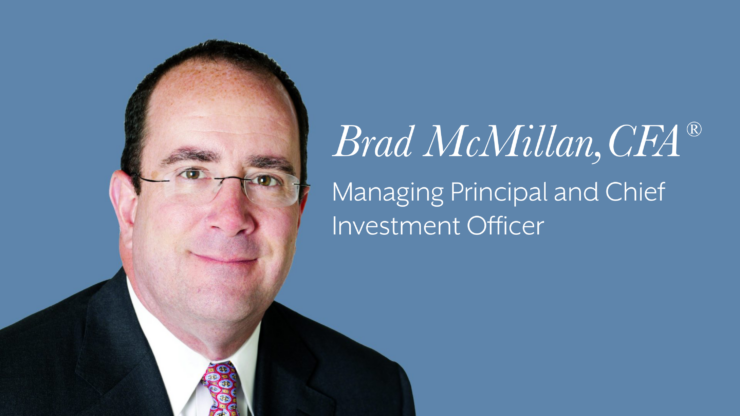Navigating Market Volatility and Strategic Adjustments
March 25, 2025
Presented by: George Thomas Watson III, CFA, CFP®
As we move through the second half of the 2020s, I want to reflect on recent market conditions, provide some perspective on the current environment, and share how we positioned portfolios considering the latest developments.
The Markets
U.S. Equities: Facing Volatility
Over the past month, U.S. stocks have experienced a significant pullback, with the S&P 500 down 10% from their all-time highs when this is being written. This volatility has sparked understandable concern, especially for those approaching or newly in retirement. However, historical data shows that markets are more likely to provide positive returns over the long term. While the likelihood of the stock market being up or down on any given day is nearly equal, the probability of gains increases the longer you stay invested. Data from Morningstar is helpful to illustrate this point.
- Since 1970, the S&P 500 has lost 10% or more in roughly 5% of rolling 3-month periods.
- Negative returns for the S&P 500 occurred in 9% of 5-year rolling periods, while positive returns occurred 91% of the time.
- For global stocks in developed countries, the MSCI World Index showed positive returns in 98% of 10-year periods.
- According to JPMorgan, the S&P 500’s average intra-year decline was -14.1 % from 1980 to 2024.
Though market downturns can be unsettling, patience and a long-term perspective are crucial to successful investing. Diversification also plays a vital role in reducing risk and potentially increasing absolute or risk-adjusted returns, even if some assets underperform temporarily. For the past 15 years, large U.S. companies have led performance, but other asset classes offer valuable stability and growth potential.
Global Assets: Stronger Performance Outside the U.S. Equities
While U.S. equities have faced recent challenges, other areas of the market have shown resilience:
- Foreign Stocks: European equities and a weakening dollar relative to other currencies have driven solid performance.
- Bonds: Fixed-income investments have offered stability and non-correlated returns to the stock markets; these traits were missing the last time the stock market had a drawdown.
- Alternative Strategies: Private equity, private lending, infrastructure, and real estate have provided stability, while hedge funds have also performed well.
Our commitment to diversification has allowed us to capitalize on global opportunities while mitigating the impact of U.S. equity market weakness.
The Economy
Tariffs and Trade Uncertainty
Trade tensions and tariffs have added to market volatility. January data showed a significant rise in U.S. imports of industrial supplies and materials, leading to the largest monthly trade gap in a decade. If this trend were to continue, it could put pressure on the economy. We are closely monitoring these developments.
Consumer Spending and Economic Outlook
Consumer spending accounts for nearly 70% of U.S. GDP and has shown weakness in retail and domestic airline spending. Auto loan delinquencies and rising credit card balances are also areas of concern. However, job growth remains healthy, and historically low unemployment rates support economic stability. The Federal Reserve’s target interest rate still sits above 4.25% and is well-positioned to combat unemployment or inflation should the need arise.
Strategic Adjustments to Our Portfolio Models
In the first half of 2024, we didn’t change our model portfolios substantially. However, over the past nine months, we have made several key adjustments to our PPS Custom investment models, particularly for moderate and more conservative investors:
- July: Began allocating to a direct lending fund in retirement accounts for more conservative investors as the S&P 500 fund grew above its target allocation.
- December: After the post-election rally when the S&P 500’s price reached 22.2 times forward earnings, we added a multi-strategy fund to more conservative retirement accounts while reducing U.S. equity exposure.
- Recently: Replaced an actively managed bond mutual fund with a lower-cost ETF run by the same portfolio managers.
We remain vigilant in monitoring model allocations and rebalancing accounts as needed.
Looking Ahead
Market volatility can be challenging, especially for those nearing or newly retired or going through a life-changing event. Our long-term focus is building resilient portfolios that weather uncertainty and seize opportunities. Please reach out if you have questions or want to discuss your goals. We’re committed to your financial success.
Past performance is no guarantee of future results. Diversification does not assure a profit or protect against loss in declining markets, and diversification cannot guarantee that any objective or goal will be achieved.


